Many fantastical creatures and stories that have captivated people around the world can be found in Chinese mythology. The Taotie, a legendary beast that has appeared in ancient Chinese art and literature, is one of the most fascinating and mysterious mythical creatures in all of China. Learn more about the Taotie and its significance in Chinese mythology as we delve into its history and symbolism here.
what does taotie mean?
The Taotie is a legendary beast that has appeared in Chinese art and literature for centuries. On bronze vessels and other ritual objects from ancient China, it is often depicted as a fierce, gluttonous beast with a large mouth and sharp teeth. The Taotie has also been portrayed as a bizarre hybrid creature with dragonlike characteristics but humanoid or animallike features on its head.
The Taotie is a mythical creature in Chinese culture that represents wealth, procreation, and authority. It has been associated with the imperial court and the power of the emperor in China, as well as the abundant harvests that were so vital to ancient Chinese society. On the other hand, the Taotie is frequently portrayed as a terrifying monster that subsists on human flesh and stands for the perils of unbridled lust and greed.
In Chinese mythology, the Taotie is both a terrifying monster and a reassuring guardian spirit. At other times, it’s portrayed as a mighty protector of the land and the people who live on it, or as a guardian spirit who watches over the portal to the underworld.

what is taotie made of?
The Taotie is a fictional character from Chinese mythology rather than an actual being. Bronze vessels and other ritual objects in ancient Chinese art frequently featured Taotie imagery. These artifacts were fashioned from a wide array of materials, from bronze and gold to jade and other priceless gems. These items typically featured a face-like image with a gaping mouth and bulging eyes, surrounded by swirling patterns and other decorative elements, and were decorated in the Taotie style. The Taotie was sometimes portrayed as a monstrous hybrid with human or animal features on its head and the body of a dragon or other formidable beast. The Taotie is an ever-present and mysterious symbol in Chinese art and culture, and this is true regardless of the medium used to depict it.
types of taotie
Various depictions of the Taotie can be found throughout Chinese mythology. The following examples of Taotie can be found frequently in traditional Chinese art and literature:
Single-faced Taotie: This type of Taotie is by far the most typical, and it typically depicts a face with a wide open mouth and bulging eyes, as well as elaborate patterns and embellishments.
Multiple-faced Taotie: Taotie in this style typically has a central face surrounded by smaller faces, either in a circular or symmetrical arrangement.
Hybrid Taotie: Taotie in this form has the head of a human or animal and the body of a dragon or other powerful beast, fusing characteristics from both into a single, formidable being.
Taotie with wings: Having wings represents Taotie’s strength, power, and the ability to move quickly or fly.
Protective Taotie: Taotie in this guise typically appears at the front of sacred buildings like temples and palaces to act as a guardian or protector.
Decorative Taotie: This Taotie style has no practical use and is instead used for decoration on objects like bronze vases, jade sculptures, and other artworks.
As you can see, there is a wide variety of Taotie in Chinese mythology, and these are just a few examples. People all over the world continue to be fascinated by the Taotie because of its mysterious origins and the rich symbolism it represents in Chinese art and culture.
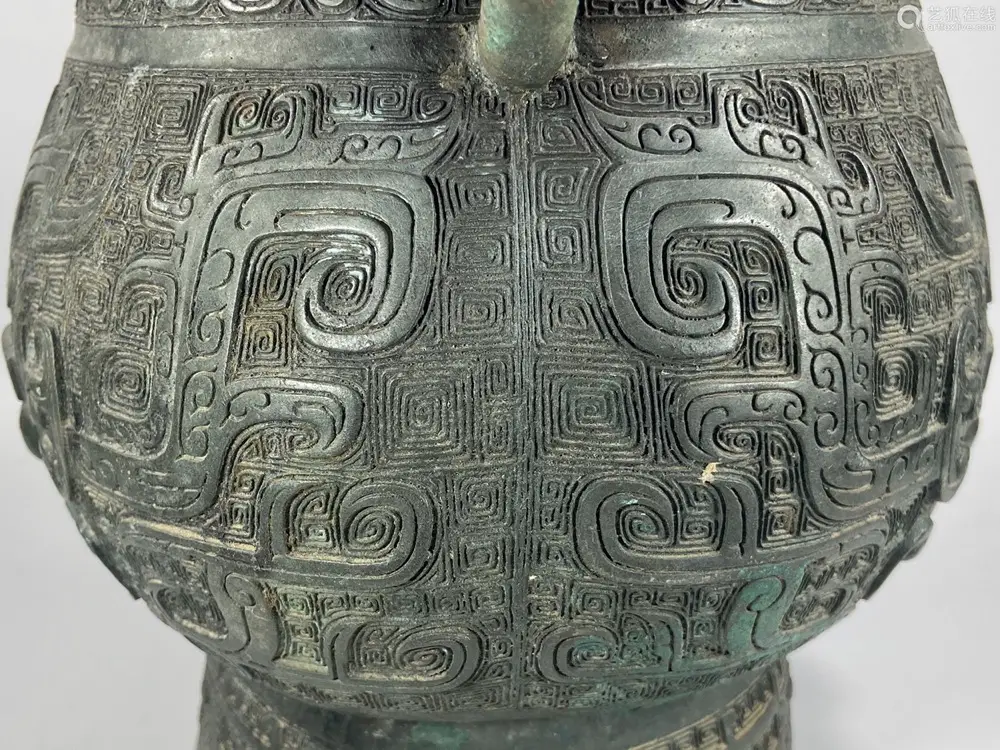
what does taotie represent?
In Chinese mythology, the Taotie is a symbol that represents various themes and concepts. Here are some of the most common meanings associated with the Taotie:
Abundance and fertility: The Taotie is often associated with abundance and fertility, as it is depicted as a creature with a large mouth that devours everything in its path. This symbolism reflects the importance of food and harvests in ancient Chinese culture, as well as the desire for abundance and prosperity.
Power and strength: The Taotie is also associated with power and strength, as it is often depicted as a fearsome and dangerous creature that is difficult to defeat. This symbolism reflects the importance of strength and power in ancient Chinese society, particularly in the imperial court and among the ruling elite.
Greed and desire: The Taotie is sometimes seen as a symbol of unchecked greed and desire, as it is depicted as a creature that consumes everything in its path without regard for consequences. This symbolism reflects the dangers of greed and excess in Chinese culture, as well as the need for balance and restraint.
Protection and defense: Despite its fearsome reputation, the Taotie is also seen as a protective force in Chinese mythology. It is sometimes depicted as a guardian spirit that protects the entrance to the underworld or as a powerful defender of the land and the people who inhabit it.
Overall, the Taotie represents a complex and multifaceted symbol in Chinese mythology, embodying a range of themes and concepts that are central to Chinese culture and history. Its rich symbolism and mysterious origins continue to captivate and intrigue people around the world.
taotie mask definition
The Taotie is a mythical creature from Chinese folklore that is often depicted on decorative masks. Taotie masks were used in traditional Chinese ceremonies and were typically crafted from bronze, jade, or other precious materials.
Face-like images, often with gaping mouths and bulging eyes, are commonplace on Taotie masks, which are also known for their elaborate patterns and embellishments. Depending on the design and style, the mask may also have other features like horns, wings, or other animalistic details.
Funerary rites, sacrificial offerings, and other religious ceremonies were just some of the many uses for Taotie masks in ancient China. They were also used as embellishments on jade sculptures, bronze vessels, and other artworks.
Historically significant in Chinese art and culture, Taotie masks are still widely collected today. Their historical and cultural value, as well as the complexity and symbolism of their designs, make them highly sought after.
What is the power of taotie?
In Chinese mythology, the Taotie is often depicted as a powerful and fearsome creature with various abilities and powers. Here are some of the powers and abilities associated with the Taotie:
Consuming everything: The Taotie is often depicted as a creature that devours everything in its path, symbolizing its insatiable appetite and hunger for power.
Protection and defense: Despite its fearsome reputation, the Taotie is also seen as a protective force in Chinese mythology. It is sometimes depicted as a guardian spirit that protects the entrance to the underworld or as a powerful defender of the land and the people who inhabit it.
Transformation: The Taotie is sometimes depicted as a shape-shifter, able to transform itself into different forms and take on different identities.
Connection to the underworld: The Taotie is often associated with the underworld and is sometimes depicted as a messenger or emissary between the living world and the realm of the dead.
Wisdom and knowledge: In some versions of Chinese mythology, the Taotie is associated with wisdom and knowledge, representing the importance of education and learning in Chinese culture.
Overall, the Taotie represents a complex and multifaceted symbol in Chinese mythology, embodying a range of powers and abilities that reflect the cultural and historical significance of this mythical creature. Its power lies in its ability to represent a variety of themes and concepts, including power, protection, transformation, and wisdom.
what was taotie used for?
In ancient China, the Taotie was used for various purposes, both practical and symbolic. Here are some of the ways in which the Taotie was used:
Decorative arts: The Taotie was a popular decorative element in ancient Chinese art, particularly on bronze vessels, jade carvings, and other works of art. The Taotie was often depicted in intricate designs and patterns, representing its importance as a symbol of power and protection.
Religious and spiritual ceremonies: The Taotie was also used in religious and spiritual ceremonies, particularly as a symbol of protection and defense. It was sometimes depicted as a guardian spirit that protected the entrance to the underworld or as a powerful defender of the land and the people who inhabit it.
Funerary rites: The Taotie was sometimes used in funerary rites as a symbol of transition and transformation. It was believed that the Taotie could help guide the deceased through the journey to the afterlife.
Sacrificial offerings: The Taotie was sometimes used in sacrificial offerings, particularly as a symbol of abundance and fertility. It was believed that by offering food and other items to the Taotie, one could ensure a bountiful harvest and prosperous future.
Overall, the Taotie played a significant role in ancient Chinese culture, representing a range of themes and concepts that were important to the people of the time. Its use in decorative arts, religious ceremonies, funerary rites, and sacrificial offerings reflects its power and importance as a symbol of power, protection, transformation, and abundance.
What can taotie mask be used for?
The Taotie mask is a decorative item that can be used in a variety of ways in modern times. Here are some of the ways in which Taotie masks can be used:
Home decor: Taotie masks can be used as decorative items in homes, particularly in rooms with an Asian or Chinese theme. They can be hung on walls or displayed on shelves, adding a touch of elegance and cultural significance to any space.
Art collection: Taotie masks are highly collectible and can be sought after by collectors of Asian art and artifacts. They are often displayed in museums and private collections around the world.
Gift-giving: Taotie masks can be given as gifts to friends or family members who appreciate Asian culture and art. They can also be given as gifts for special occasions, such as weddings or birthdays.
Cosplay: Taotie masks can be used in cosplay or costume play, particularly for those who are interested in Chinese mythology or culture. They can be used to create elaborate costumes or worn as standalone masks.
Overall, the Taotie mask is a versatile and culturally significant item that can be used in a variety of ways. Whether used for home decor, art collection, gift-giving, or cosplay, the Taotie mask represents a powerful and enduring symbol of Chinese mythology and culture.

taotie in feng shui
In Feng Shui, the Taotie is a powerful symbol that has been used for centuries to attract good fortune, wealth, and success. This ancient Chinese mythical creature is believed to have protective qualities, and its image is often used in feng shui to create a sense of security and stability in the home or workplace.
One of the key ways in which the Taotie is used in Feng Shui is as a protective charm. According to Feng Shui principles, placing a Taotie at the entrance of a building or room can help to ward off negative energy and create a sense of safety and security for those who enter. This is particularly important in today’s world, where stress and anxiety can often lead to feelings of insecurity and fear.
The Taotie is also associated with wealth and prosperity in Feng Shui. Its image is often used in areas of the home or office that are associated with financial abundance, such as the wealth corner or the front entrance. By displaying the Taotie in these areas, it is believed that one can attract good fortune and financial abundance into their life.
In addition to its protective and wealth-attracting qualities, the Taotie is also associated with career success in Feng Shui. Its image is often displayed in the career sector of the home or office, as it is believed to provide support and help advance one’s career. By displaying the Taotie in this way, individuals can create a sense of stability and grounding in their professional life, which can help them to achieve their career goals.
Finally, the Taotie is also used as a symbol of stability and grounding in Feng Shui. Its image is often displayed in areas of the home or office that require a sense of balance and harmony, such as the living room or study. By incorporating the Taotie into these spaces, individuals can create a sense of calm and relaxation, which can help to reduce stress and promote a greater sense of well-being.
In conclusion, the Taotie is a powerful and versatile symbol in Feng Shui, with a wide range of applications for attracting good fortune, wealth, and success. Whether used as a protective charm, a wealth attractor, a career enhancer, or a symbol of stability and grounding, the Taotie remains an important part of Chinese mythology and culture, and a valuable tool for those seeking greater harmony and balance in their lives.
what are the 4 Chinese demons and their meanings?
Chaos, also known as Hun Dun, is one of the four fierce beasts in Chinese mythology. The original image of Chaos came from the “Xici Sanjing” in the “Shanhaijing”, which describes Chaos as a divine being with a yellow bag-like appearance, red like cinnabar fire, six legs and four wings, with no face but able to recognize music and dance. Later, due to the burning of books by the Qin dynasty, many ancient gods and goddesses disappeared from Chinese cultural history, and Chaos was no exception.
Qiong Qi, also known as the “Poor Strange Creature”, is one of the four fierce beasts in Chinese mythology. It is mainly recorded in the “Shanhaijing”. According to the “Shanhaijing – Hainei Bei Jing”, Qiong Qi looks like a tiger with a pair of wings, likes to eat people, and starts eating from the head. It is a fierce and strange beast.
Taotie, also known as “Ao Hen”, is one of the four fierce beasts in ancient Chinese mythology. According to the “Shen Yi Jing”, Taotie is a monster living in the remote west, with a tiger-like body and a dog-like fur. Its fur is very long, its face is a bit like a human, its legs are a bit like a tiger, its mouth has tusks like a wild boar, and its tail is eight zhang long. It dominates the west and is unbeatable.
Taotie is a mythical beast in ancient Chinese mythology that is known for its insatiable appetite. Its biggest characteristic is its ability to eat. It is an imaginary and mysterious monster that has no body because it ate itself up from its insatiable hunger. It has only a big head and a big mouth, and it is extremely greedy, eating anything it sees. Because of excessive eating, it eventually dies from overeating. It is a symbol of greed and is often used to describe people who are gluttonous or greedy.
taotie in history
From the Shang dynasty onward, the Taotie has played an important role in Chinese history and culture (1600-1046 BCE). It was widely believed to have a protective function in the afterlife, so it was frequently depicted on bronze vessels used in rituals and ceremonies.
Zhou dynasty (1046-256 BCE) bronze art frequently featured the Taotie, a motif often associated with ancestor worship. Architectural elements such as roof tiles and door handles, as well as ceremonial weapons like swords and spears, bore its likeness.
The Taotie remained a popular motif in later periods of Chinese art and literature. It was a popular motif for artists to depict in stone reliefs and sculptures during the Tang dynasty (618-907 CE), and it was also used as a decorative element on ceramic vessels.
The Taotie was a legendary Chinese creature that was thought to have the ability to ward off evil spirits and protect the dead from the afterlife. The worship of gods and goddesses, such as Nüwa, was closely linked to its representation, which was frequently found in tomb decorations.
The Taotie is widely used in contemporary Chinese art, architecture, and design as it continues to serve as a significant cultural symbol. Its likeness is also widely used in contemporary feng shui, where it is thought to provide protection and good fortune. Artists, designers, and academics all find inspiration in the Taotie, which has stood the test of time as a powerful symbol of Chinese mythology and culture.
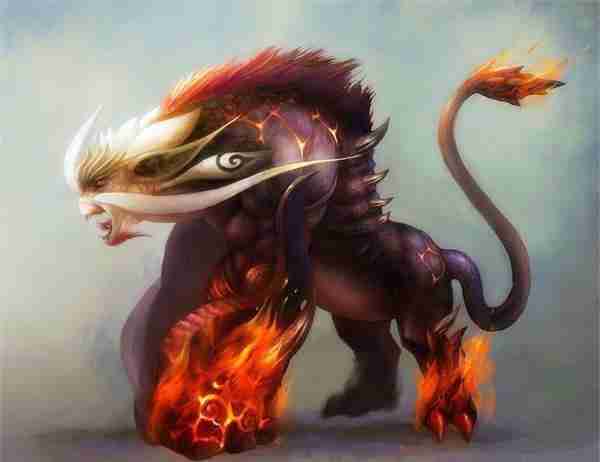
Where did taotie originate?
“饕餮” is a mythical creature in ancient Chinese mythology known for its ferocious and voracious appetite. It is also known as “Lao Tuo” or “Pao Xiao,” and is one of the four evil beasts in Chinese mythology. The earliest mention of the creature can be found in the “Classic of Mountains and Seas – The Classic of the Northern Mountains.”
According to “Classic of Mountains and Seas – The Classic of the Northern Mountains,” the creature has the body of a sheep and the face of a human, with eyes located under its armpits, tiger teeth, and human claws. Its voice sounds like a baby’s cry. The creature’s head is often used as a decorative motif on ancient bronze artifacts and is called “taotie,” which is a transitional design between the wolf totem and the dragon totem.
There are several legends about the origin of the “taotie” creature:
The son of the Jinyun family: It is said that after the Yellow Emperor defeated the demon Chi You, Chi You’s body was cut into pieces, and his head fell to the ground, giving rise to the Jinyun family. People of this family have two horns on their heads, tiger teeth, and human bodies, with eyes under their armpits. They later became subordinates of the Yan Emperor and served under the Yellow Emperor. During the reign of Emperor Shun, a son was born to the Jinyun family named Pao Xiao. This son had extraordinary abilities but was greedy and disobedient to Emperor Shun’s rule. At that time, evil spirits were causing trouble in the mountains and forests, and Pao Xiao was exiled to Youzhou, one of the four corners of the world. He later changed his name to “taotie” and quickly subdued the evil spirits, becoming a major evil god in the area.
The head of Chi You: Legend has it that when the Yellow Emperor defeated Chi You, Chi You’s head absorbed the resentment of the war and transformed into the taotie creature.
Great creation of the Miao ancestors: The taotie is a symbol that represents the combination of the ancestors Chi You, Hua Dou, and Pan Hu, and is the fifth son of the dragon. Because of its love of food, it is often depicted on the lids of cooking vessels. When used to decorate bridges, the taotie represents the ability to drink, preventing the bridge from being submerged in water.
The disobedient son of the Heavenly Emperor: There is no legend about the origin of the taotie creature, but it can be inferred from the origins of the other three evil beasts. For example, the Qiong Qi is the son of the Heavenly Emperor Shao Hao, the Hun Dun is the son of the Emperor Hong, and the Tao Wu is the son of the Heavenly Emperor Zhuang Xu. It is speculated that the taotie is the son of either Shen Nong or Xuanyuan.
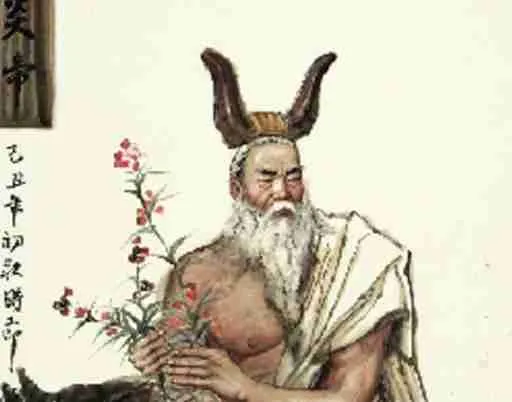
taotie design
The taotie motif is ubiquitous in bronze vessels from the Shang and Zhou dynasties of ancient China. It’s a stylized representation of a mask-like face with bulging eyes, fangs, and horns and a wide-open mouth that covers the whole thing. Although its history and symbolic connotations are shrouded in mystery, the taotie is generally accepted to have represented authority, procreation, and the afterlife.
The taotie motif has been an integral part of Chinese design for centuries, appearing frequently in everything from buildings to furniture to decorative arts. Pottery, jade carvings, temple pillars, and palace gates are just some of the many artifacts that have been influenced by its unique design. Many contemporary designers have found new ways to incorporate the taotie motif into their work, paying homage to China’s long and illustrious history through art.
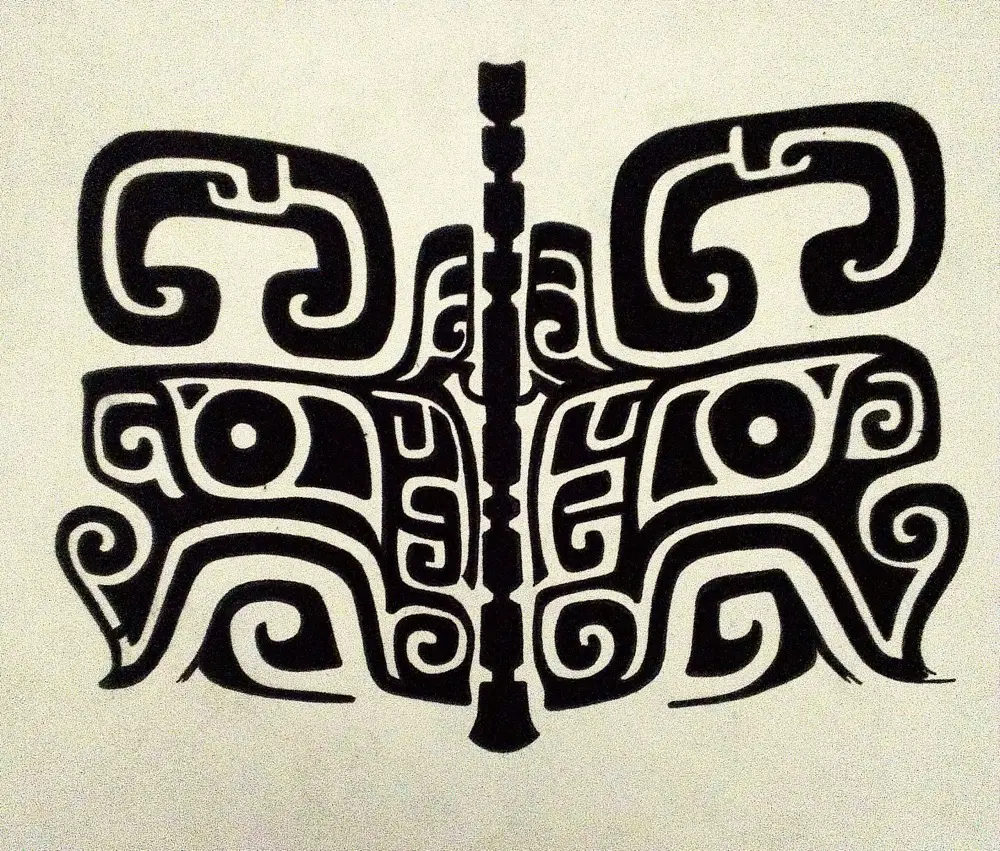
Taotie and the Classic of Mountains and Seas
Chinese mythology includes a legendary creature called Taotie, which is mentioned in multiple classics, including the Classic of Mountains and Seas (Shan Hai Jing). From the Warring States era, comes The Classic of Mountains and Seas, a compendium of ancient Chinese myths, legends, and geography (475-221 BCE).
Taotie is one of the four ferocious creatures that represent the four cardinal directions in the Classic of Mountains and Seas. Taotie is a northern deity with a spherical body, a large mouth, and no appendages. It is said to be constantly hungry and devour anything in its path, thanks to its enormous appetite.
Taotie is portrayed in the Classic of Mountains and Seas as a monster that poses a threat to humanity. Using magical means, the text’s legendary Chinese ruler, Emperor Yao, managed to tame Taotie and keep it from harming humans. There must be peace on Earth, and that peace begins with humans living in harmony with nature.
Bronze vessels, jade carvings, and pottery are just some of the many examples of Chinese art that feature depictions of Taotie. Modern culture has also made use of its likeness.
taotie VS dragon
Firstly, the first view believes that Taotie is the son of the dragon.
This view mainly comes from folk legends. As we all know, Taotie is one of the Four Fiends and has been the subject of myths for a long time. In fact, the first time the term “Taotie” appeared in history was more than 2,000 years ago during the Spring and Autumn Period, recorded in the “Zuo Zhuan”. It tells the story of a talentless son of the Jinyun clan who indulges in pleasure, covets wealth, and commits many evils. As a result, angry people compared him to the ferocious Taotie.
The Jinyun clan in this legend is said to be descendants of the Yan Emperor tribe, and in Taoist scriptures, the Yan Emperor is called the “Red Dragon.” Therefore, according to this relationship, Taotie, the son of the Jinyun clan, is the son of the dragon. After hundreds and thousands of years of oral transmission, Taotie has become known as the son of the dragon.
The second view believes that Taotie is not the son of the dragon.
In the “Nine Sons of the Dragon” legend, Li Dongyang did not mention Taotie, and Taotie is a fierce beast, while the dragon is a divine beast. These two meanings are completely opposite, so how could a fierce beast be the son of a divine beast?
Besides these two views, there is also a group of people who are not sure whether Taotie is the son of the dragon.
After all, in ancient times, “nine” not only meant the number nine but also meant “at most” or “most.” The dragon, as a “romantic and suave” creature, who knows how many sons he has?
Of course, even if Taotie is the son of the dragon, it is not unreasonable. No one can guarantee that their children will not turn bad! In this way, all three views seem to have their own reasoning, but we are still confused about whether Taotie is the son of the dragon.
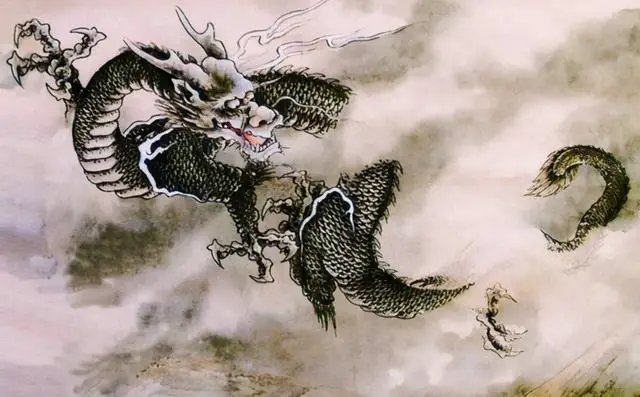
taotie vs qilin
In Chinese mythology and folklore, Taotie and Qilin are two separate beings.
The mythical creature Taotie is typically portrayed as a ravenous and dangerous beast. In Chinese mythology, it is one of the four most evil creatures due to its reputation for devouring everything in its path. The ancient Chinese bronze vessels often feature Taotie, who is depicted with a humanoid head and a beastly body.
On the other hand, the mythical creature Qilin is associated with positive outcomes like success and longevity. It has a single horn like a deer but scales like a dragon and a long tail. Along with the dragon, the phoenix, and the turtle, Qilin is one of the four sacred creatures in Chinese mythology.
Taotie and Qilin are polar opposites in terms of personality and symbolism. Qilin represents good fortune and generosity, while Taotie represents greed and destruction.
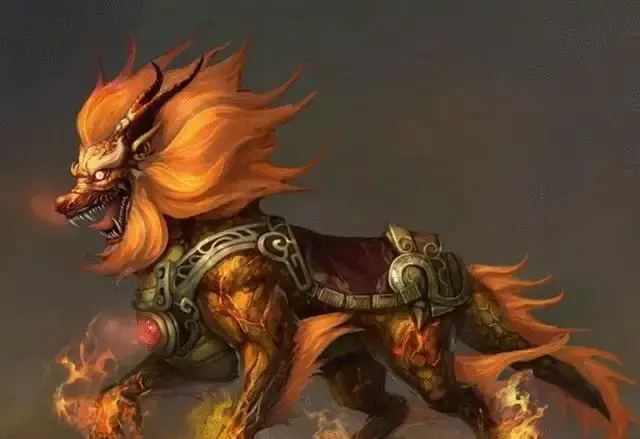
taotie vs Fenghuang
Although both the Taotie and the Fenghuang (or Phoenix) are legendary creatures in Chinese mythology, they couldn’t be more dissimilar.
Whenever depicted, Taotie has a gaping maw and sharp teeth, indicating that it is a vicious and gluttonous beast. One of the Four Evil Creatures, it represents gluttony and greed in Chinese mythology. The ancients blamed it for havoc and destruction because they thought it preyed on humans.
On the other hand, Fenghuang represents happiness, tranquility, and success. It’s supposed to bring about peace and joy, so it’s usually depicted as a magnificent bird with bright plumage. According to Chinese mythology, the fire deity Fenghuang only makes appearances during times of peace and prosperity.
The mythology and symbols associated with Taotie and Fenghuang couldn’t be more different. Fenghuang is a symbol of good fortune and harmony, while Taotie represents the dark side of human nature and is associated with disorder and destruction.
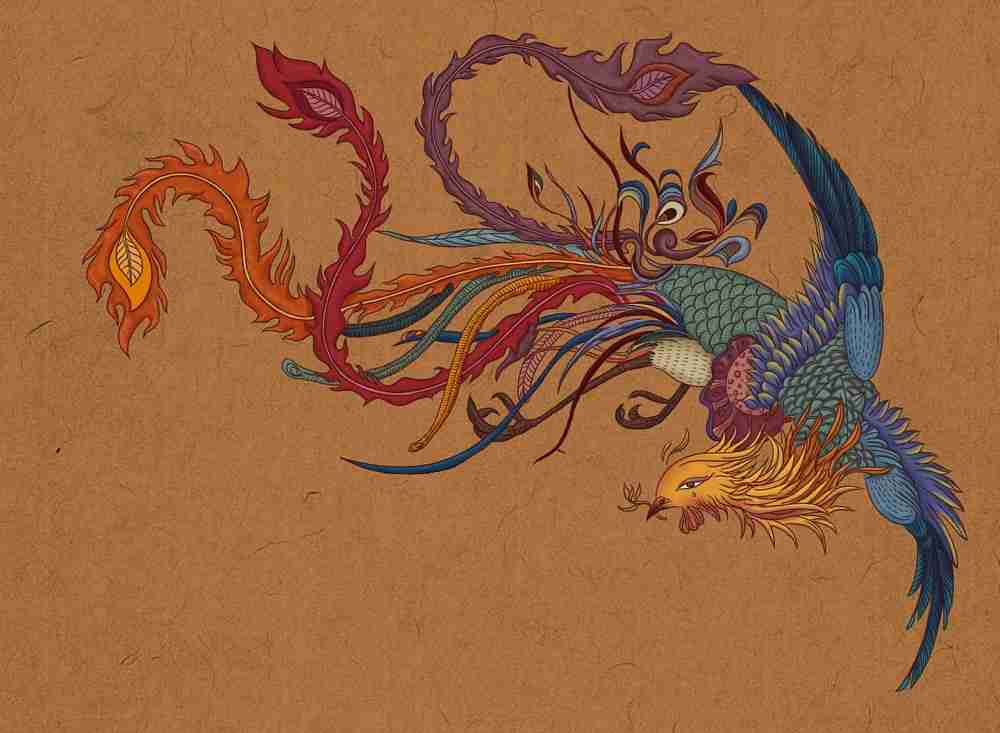
taotie vs pixiu
There are two mythical creatures from Chinese mythology, the Taotie and the Pixiu, but they are distinct from one another.
When depicted in art, Taotie—one of Chinese mythology’s “four evil beasts”—looks like a terrifying, savage beast with a gaping maw and pointed teeth. It was thought that Taotie had an endless appetite and would eat anyone or anything in its way.
However, Pixiu is a much friendlier beast, usually depicted as a winged lion with a dragon’s head. It is a common symbol of prosperity in Chinese culture due to the widespread belief that it can bring about financial success.
Taotie and Pixiu both have different meanings and perspectives in Chinese culture, despite sharing a common association with wealth and abundance. When compared to Pixiu, the positive symbol of prosperity and good fortune, Taotie is often seen as a negative symbol of greed and excess.

taotie vs lion
Although both the taotie and the lion feature prominently in Chinese mythology and culture, the two are quite different.
The terrifying Taotie is typically portrayed as a ravenous beast that eats anything—including humans—that crosses its path. Its head resembles a dragon’s, while its body resembles a pig’s, and it has sharp teeth. Taotie is one of the four evil creatures in Chinese mythology, representing avarice and extravagance.
In contrast, the lion represents bravery and strength in Chinese culture. Guardian of homes, temples, and other sacred buildings, it frequently appears in art. The lion is another symbol of good fortune and prosperity.
The taotie and the lion are both significant figures in Chinese mythology, but they represent different things. While the lion stands for positive attributes like strength and protection, Taotie stands for negative ones like greed and excess.

taotie vs tiger
Taotie and tiger are both creatures from Chinese mythology, but they have very different characteristics and origins.
Taotie is a mythical creature that is often depicted as a gluttonous monster with a gaping mouth and an insatiable appetite. It is associated with greed, indulgence, and excess, and is often used as a symbol for corruption and vice.
Tigers, on the other hand, are real animals that are native to Asia. They are fierce predators that are known for their strength, agility, and hunting skills. They are often revered in Chinese culture as symbols of power, courage, and nobility.
In terms of their symbolism and meaning, taotie and tiger are quite different. Taotie represents negative qualities such as greed and excess, while tiger represents positive qualities such as strength and courage. Additionally, taotie is a mythical creature that exists only in stories and art, while tigers are real animals that have a physical presence in the world.
Overall, taotie and tiger are very different creatures with distinct characteristics and meanings in Chinese mythology and culture.
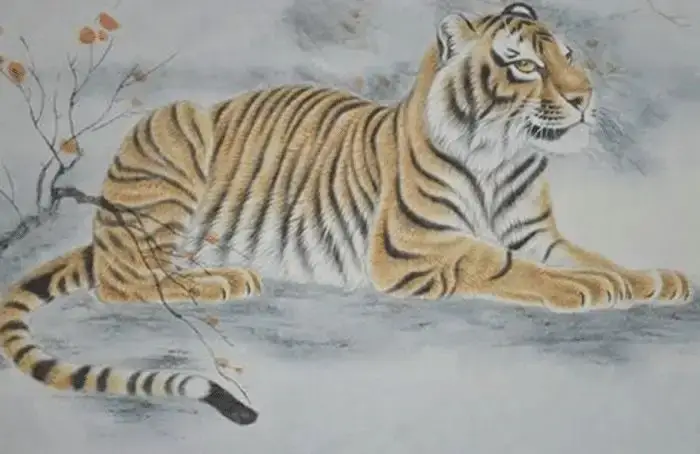
taotie vs Nian
Taotie and Nian are both mythological creatures in Chinese culture, but they are very different in their appearance and symbolism.
Taotie is an ancient Chinese monster that is often depicted in bronze vessels from the Shang and Zhou dynasties. It has a fearsome appearance, with a gaping mouth and bulging eyes, and is often shown with a curved horn on its forehead. In Chinese mythology, Taotie is known for its insatiable appetite and its tendency to devour everything in its path, including other monsters.
The symbolic meaning of Taotie is complex and multifaceted. In some interpretations, it represents the dangers of unchecked greed and desire, while in others, it is seen as a protector against evil spirits and negative energies.
Nian, on the other hand, is a mythical beast that is often associated with the Chinese New Year. According to legend, Nian was a ferocious monster that lived in the mountains and terrorized villages. It had sharp teeth, a long tail, and the ability to breathe fire.
To ward off Nian, the villagers would decorate their homes with red paper cutouts and set off fireworks, which were believed to scare the monster away. This tradition has evolved into the modern-day Chinese New Year celebrations, which are marked by dragon and lion dances, fireworks, and the exchange of red envelopes filled with money.
Symbolically, Nian represents the challenges and obstacles that must be overcome in order to achieve success and prosperity. By driving away the monster, the villagers symbolically overcame their fears and obstacles, paving the way for a new year filled with good fortune.
In summary, Taotie and Nian are both important mythological creatures in Chinese culture, but they represent very different things. Taotie represents the dangers of greed and desire, while Nian represents the challenges that must be overcome to achieve success and prosperity. Both creatures have played important roles in Chinese art, literature, and folklore, and continue to inspire new generations of artists and storytellers.

conclusion
The Taotie persists as a ubiquitous cultural icon in contemporary China, showing up in media as diverse as classical paintings and manga. One of the most enduring and enigmatic creatures in Chinese mythology, the dragon has captured the imagination of people all over the world thanks to its rich symbolism and mysterious origins.